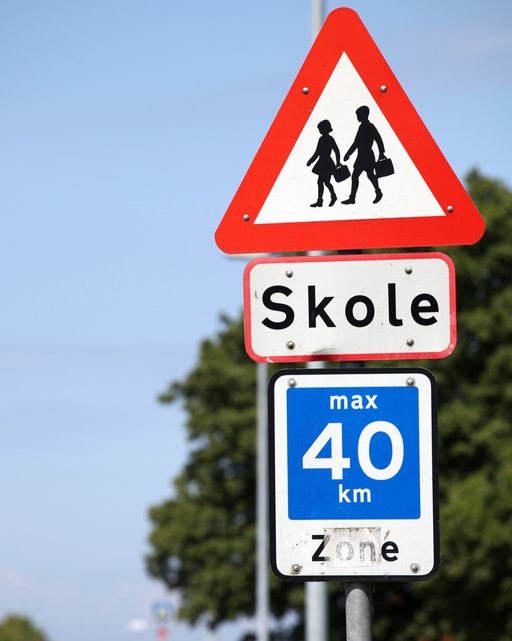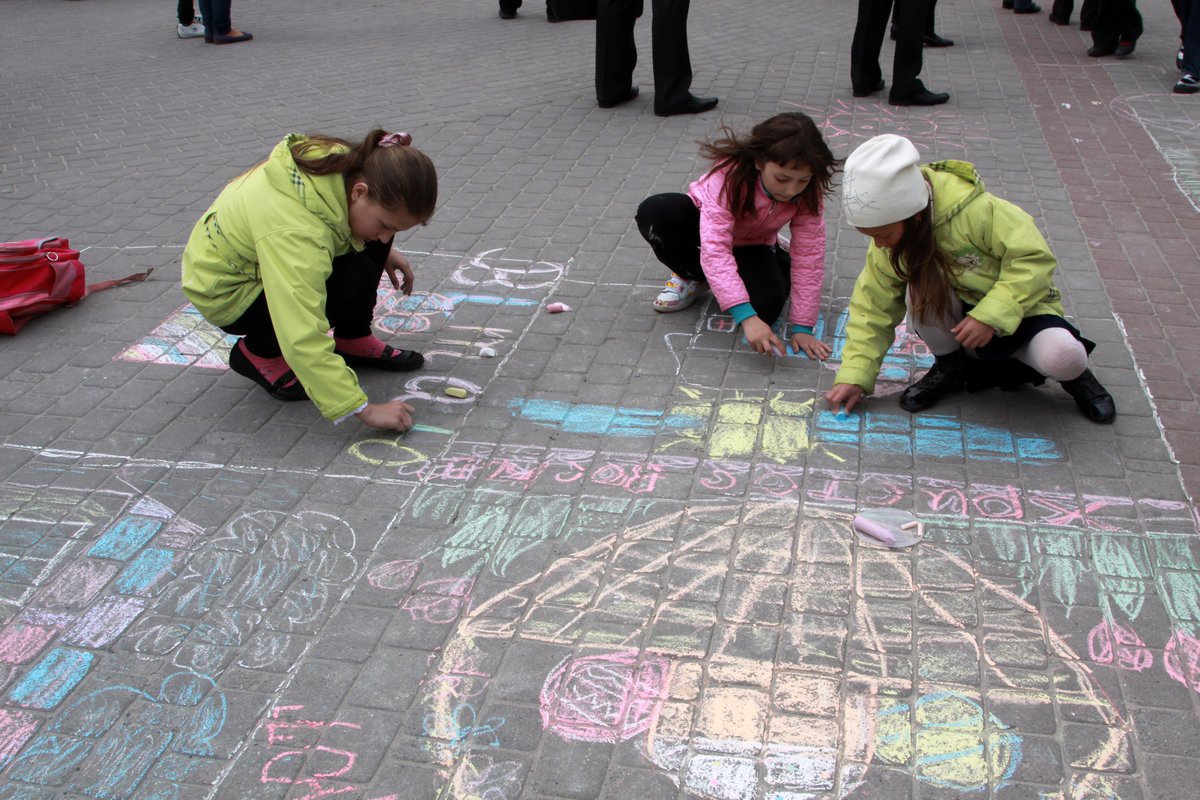Racialization in Nordic Schooling
Research on schools can shed light on the experiences of racially minoritized children, with a focus on Denmark.

Summary: Despite their rich history of racial, ethnic, cultural, and religious diversity, the Nordic countries are still frequently portrayed as racially homogeneous. The term racialization refers to the social processes through which individuals or groups of people are ascribed racial meanings. Research shows that children from racially minoritized groups suffer marginalization due to racialization taking place in schools.
Why is it important to address the racialization process in Nordic schooling?
The Nordic states have a rich history of racial, ethnic, cultural, and religious diversity, rooted in colonial legacies and the presence of indigenous communities. Immigration to the region dates back much earlier than the recent waves of migration and postcolonial patterns of racial exclusion. Despite this diversity, the dominant discourse portrays Nordic countries as culturally, religiously, and racially homogeneous. With increasing academic interest in exploring racialization, whiteness, and anti-racism in Nordic countries, it has been noted that new forms of racialization, such as "cultural racism" or "new racism", are emerging.
Cultural racisms are embedded in imaginaries and stereotypologies of cultural and ethnic differences. These subtle forms of racism have led to cultural differences being associated with notions that conflict with Nordic state values, particularly targeting migrants from the Middle East, Asia (e.g., guest worker movements in the 1960s and 1970s), refugees, Eastern European post-socialist states, and more recent EU members. These forms of racialization are also a crucial part of the everyday experiences of racially minoritized students in Nordic schools.
What is racialization?

The concept of racialization describes the social processes through which individuals or groups of people are ascribed racial meanings. It refers to those processes and structures in which race as a category is created through a complex history that organizes and creates hierarchies within the population (See Myong for more on this, 2007 (in Danish)). Racial hierarchization happens through processes where phenotypical/cultural, visible, or audible differences are applied in constructions of explanation and action. Racialization is the processual formation in which the issue of race is applied and begins to matter in social practices in relation to different identity categories such as gender, class, language, religion, or sexuality. Racism is then the negative effect that racialization has, where discrimination on the basis of imagined racial features happens.
The historical background of the notion of race
The word racialization has its background in the notion of the existence of different races of human being. The understanding of race was originally based on a biological division of people centred on phenotypical/cultural, visible, or audible differences. Those people who were considered to be the “racial other” – the non-white – were ascribed generalizing identities and character traits. For example, it is a racialized assumption that intelligence is associated with skin color or the size of the nose. The idea of biological races arose in the context of European colonization of African nations and other parts of the world and people who were considered non-white. Such biological racial division was intended to classify people into hierarchies as part of constructing an idea of biological white supremacy. For the white colonists, this classification helped to justify how they forcibly colonized countries and enslaved millions of brown and black people. Being white has therefore been standard and has acted as the norm by which all non-white people were defined. The widespread idea of a neutral skin color (white) is still prevalent today also in the Nordic context, which is why all other skin colors are judged as racialized others.
Color and race blindness in Nordic schooling
In Denmark and the other Nordic countries, studies have shown that in the wake of the Second World War, there is a widespread understanding that racism is no longer a problem "here". Because race and racism are not compatible with narratives that we in the Nordics are very inclusive and equal, both are often dismissed as something that exists elsewhere. The word race becomes associated with racism. Racism is associated with being a racist, a person who deliberately and explicitly hates all non-white people. The question of intention becomes, among other things, central to color/race blindness. However, the many accounts from children and young people who experience being racialized and exposed to racism testify that, despite good pedagogical intentions not to emphasize race as an important social relationship in education, they nevertheless experience being met with stereotypical notions based on their appearance in the education context.
Color/race blindness is a term that describes the idea many people have that they do not see or notice race. This reluctance or effort not to 'see' or 'notice' race is linked to the idea that having a race (read: being non-white) is considered inferior and perhaps even shameful. Therefore, there is a notion that it will be harmful if you 'notice' race. In an educational context, 'seeing' race conflicts with the assumption of 'seeing the whole child'. This means that one pretends not to see the child's race and instead strives to "see beyond" the child's race (Yang, 2021). Despite intentions not to see skin color/race, color/race blindness is an often misunderstood belief. The consequence of this is that many pedagogical professionals perform defensive maneuvers in order not to appear racist by attributing meaning to race. From research we see that teachers and pedagogues often have good intentions of not wanting to see children with racial attributes. However, such a denial can have major consequences for the racially minoritized, since with color/race blindness one ignores their experiences and living conditions. Additionally, race/color blindness, despite good intentions, is a denial of the racial inequality and discrimination that exists in Nordic society.

Which racially minoritized groups are there in Nordic schools?
Special attention has been given to children with a migration background related to guest workers since the 1970s in the education systems of the Nordic states. In Denmark, this has included the following education policies and pedagogical strategies: local regulations for mother tongue education provision, implementation of bi-cultural/lingual classes, special reception classes, school distribution strategies including bussing pupils around in Aarhus Municipality, PISA results being reviewed by ethnicity, and Danish as second language teaching. These policies are assessing the children who in the media, policy documents and educational practices have been referred to by a wide range of different categories. From the beginning of the 1970s, they were termed ‘foreign children’, ‘foreign worker children’ and ‘foreign language children’, while the terms ‘immigrant children’ and ‘bi-cultural’ have been used since the 1980s. Up through the 1990s, the use of ‘bilingual students’ in particular started, while the categories ‘children with a different ethnic background (than Danish)’, ‘descendants’, ‘second-generation immigrant children’ and, most recently, the phrase ‘children of third-generation immigrants’ gained prominence through the 2000s. These categories are not exclusive, but also used overlapping with the category ‘Muslim children/students’. The use of different categories to label this group of non-white children with migratory histories or roots has evolved over the years, and new categories have been added without replacing the previous ones.

How do racially minoritized students experience racialization in schools?
Recent studies find that the teaching and social interactions in Danish public schools, as well as in other Nordic countries, are based on cultural and pedagogical ideals that are primarily linked to whiteness, western-ness, and the middle class. This approach is often characterized by the idea of being “colorblind” or “culturally neutral”. However, this approach perpetuates racial disparities by normalizing whiteness as the national norm, leading to the exclusion of non-white students and the creation of a divide between “us” (white students) and “them” (non-white students). This white normativity can be harmful and exclusionary for racially minoritized students.
Research has shown that social and cultural discourses of equality and uniformity in Norway often result in the marginalization of racially minoritized students. (See Carla Chinga-Ramirez’s paper from 2017 for more on this). Additionally, some studies examine how racially minoritized students actively work to counteract the racism and discrimination they experience. For example, Ahrong Yang (2021) examines the experiences of brown and black students at schools in Denmark, focusing on their predictions of future encounters with racism and their concerns about how to handle such situations. Yang refers to this as “racialized forecastings” highlighting the challenges that racially minoritized students face when trying to make sense of their experiences through dominant race-blind discourses. These studies are part of a growing interest in understanding the socialization and belonging of racially minoritized students in schools, through the intersections of racialization, gender and social class.
Anti-racist education in the Nordics?
Researchers have also been investigating ways to dismantle racialization and structural inequalities through education. Approaches such as multicultural education, intercultural education, and migration pedagogies have been explored, as well as anti-racist education. An anti-racist education requires that race is addressed in education rather then denied, and that the teachers are able to acknowledge the students’ different racial experiences (being majoritized or minoritized positions) without it being considered as racist. Recently, there has been a greater focus on anti-racist education, which calls for decolonial, intersectional, and affective approaches in order to recognize and address the role of race in Nordic state education systems. These include, for instance, questions regarding how gender and social class intersect with race when exploring students’ processes of inclusion and marginalization; or, questions of how to make the colonial heritage and knowledge that is Eurocentric visible in educational practices in order to prevent the reproduction of whiteness as the norm. Studies like these demonstrate how racialization is both created and resisted through education, a central institution in welfare states.
Education research can shed light on race in the Nordics.
This article is published in response to readers' interest in issues to do with race as well as education and childhood.
Further reading:
- Ahrong Yang, ‘Racialized forecasting. Understanding race through children’s (to-be) lived experiences in a Danish school context’, Nordic Journal of Studies in Educational Policy, 7(3) (2021), s. 169–178.
- Carla Chinga-Ramirez, ‘Becoming a “Foreigner”: The Principle of Equality, Intersected Identities, and Social Exclusion in the Norwegian School’, European Education, 49(2–3) (2017), s. 151–165
- Iram Khawaja, ‘Minoritetsstress: Individuelle belastningsreaktioner på strukturelle forhold’ [Minority stress: Individual strain responses to structural conditions], Kvinder, Køn & Forskning, 2 (2022).
- Jin Hui Li, ‘The lived class and racialization – histories of ‘foreign workers’ children’s’ school experiences in Denmark’, Nordic Journal of Studies in Educational Policy, 7(3) (2021), s. 190–199.
- L. Myong, 'Hvid avantgardemaskulinitet og fanta-sien om den raciale Anden' [White avant-garde masculinity and the fantasy about the racial Other]. In J. Kofoed & D. Staunæs eds., Magtballader: 14 fortællinger om magt, modstand og menneskers tilblivelse [Power trouble: 14 accounts of power, resistance and becoming a human being] Danmarks Pædagogiske Universitetsforlag (2007). pp. 197–220
- Josefine Lee Stage ja Trine Øland, ‘Raciale vragrester i velfærdsprofessionelt arbejde’ [Racial debris in welfare professional work], Tidsskrift for Professionsstudier, 17(32) (2021), s. 6–19.
- Mante Vertelyte ja Dorthe Staunæs, ‘From tolerance work to pedagogies of unease: affective investments in Danish antiracist education’, Nordic Journal of Studies in Educational Policy, 7(3) (2021), s. 126–135.
- Mante Vertelyte, Not So Ordinary Friendship: An Ethnography of Student Friendships in A Racially Diverse Danish Classroom (Väitöskirja, Det Samfundsvidenskabelige Fakultet, Aalborgin yliopisto, 2019).
- Mette Buchardt, ‘The “Culture” of Migrant Pupils: A Nation- and Welfare-State Historical Perspective on the European Refugee Crisis’, European Education, 50(1) (2017), s. 58–73.
- Mira C. Skadegård, ‘With Friends Like These, Who Needs Enemies?: Structural Discrimination and Good Intentions in Danish Everyday Contexts’, Nordic Journal of Migration Research, 7(4) (2017), s. 214–223.